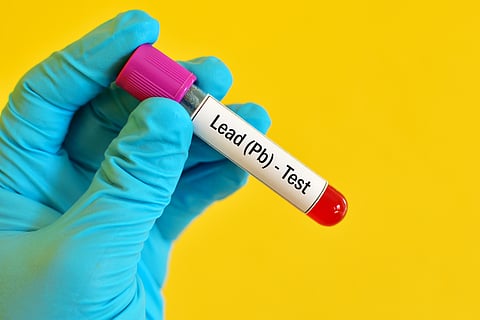

A new study estimates global yearly losses from childhood lead exposure at $3.4 trillion, or 2% of global GDP.
Despite the ban on leaded petrol, contamination persists through unsafe recycling, paints, toys and food products.
Low- and middle-income countries bear the heaviest burden, with millions of children exposed to toxic levels.
Researchers call for urgent action to eliminate unsafe sources and strengthen monitoring and community involvement.
A new study published in the journal Communications Earth & Environment has found that lead exposure continues to pose a serious public health and economic challenge in the 21st century, despite the global phase-out of leaded petrol.
The research estimates that the global yearly monetary loss from childhood lead exposure is around $3.4 trillion, equivalent to just over 2 per cent of global GDP in 2019. The burden, it notes, falls disproportionately on low- and middle-income countries, where informal recycling and weak regulation leave children most at risk.
Lead production currently stands at about 16 million tonnes per year, much of which is used in batteries, paints, and consumer goods. The study warns that rising demand for electrification, coupled with poor recycling practices, could worsen global inequalities and undo decades of progress in protecting children’s health.
Lead contamination remains widespread across air, water and soil. The study found that enrichment of lead has been observed in surface soils in both rural and urban areas worldwide.
Humans are exposed primarily through ingestion of contaminated food and water, or inhalation of dust and aerosols. Informal recycling of lead-containing products, often conducted near homes and schools in unsafe conditions, further exposes workers and surrounding communities to hazardous levels.
Coal combustion, contaminated soils, and the continued sale of lead-laden paints, toys and even food products also compound the risks.
Lead exposure is particularly damaging for developing foetuses and young children, as it crosses both the placenta and the blood–brain barrier. Even at low levels, it can impair brain development, lower IQ, and cause behavioural issues.
Children with blood lead levels of 10 micrograms per litre lose an estimated one IQ point, according to related analyses. Studies in cities across Asia, Africa, South America and New Zealand found that large numbers of children had blood lead levels exceeding 5 micrograms per decilitre (100 milliliters) before the ban on leaded petrol.
The study warns that without stronger regulation and safer recycling, the economic costs and developmental losses associated with lead exposure will continue to mount.
To avert further harm and inequality, the researchers call for coordinated global action in four areas:
Manage the entire life cycle of lead-containing products
Eliminate unsafe and illicit sources of lead
Strengthen monitoring and community participation
Account for the full socio-economic cost of lead exposure
Monitoring and tracing sources of lead in air, water and soil, and quantifying its socio-economic impact, the authors argue, remain among the most critical scientific and policy challenges of the 21st century.